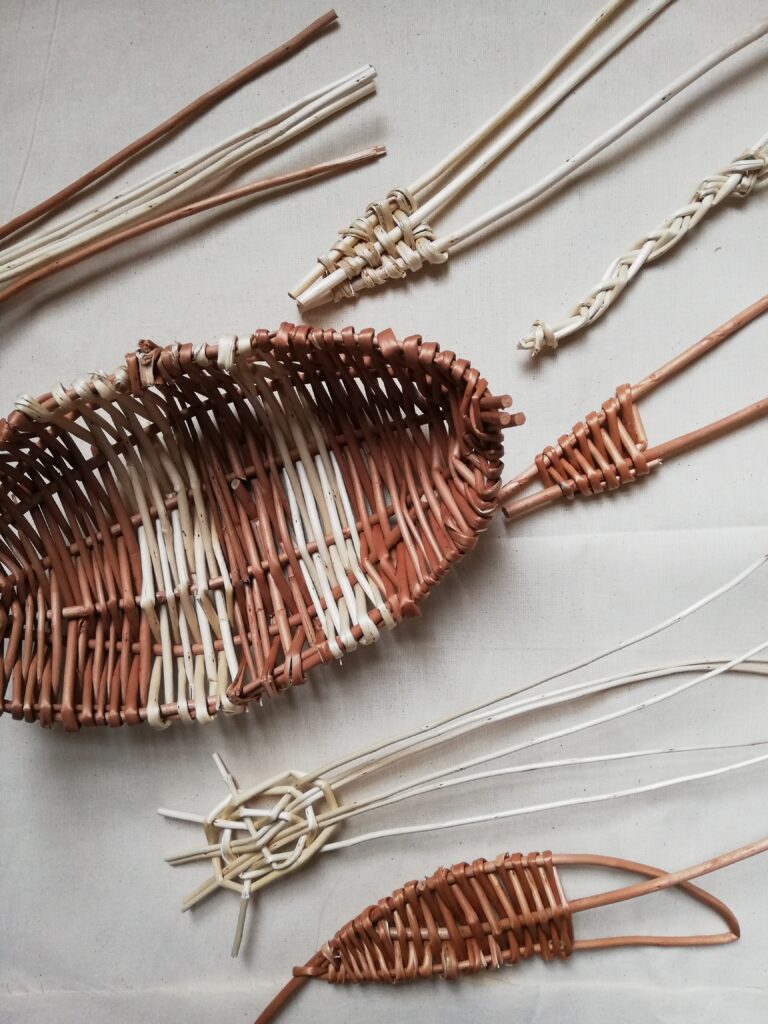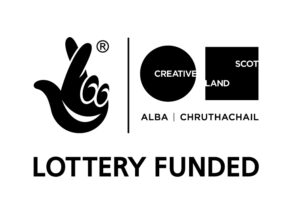Exploratory Scottish folk artist Quinie (Josie Vallely) bursts her practice wide open, exploring and investigating the cultural context of Nawken (Scottish Traveller) song, her own cultural context in the rhythm of a year, and the dialogue between traditions that produces new work.
As part of this Quinie has treated us to a 2 part podcast exploring the cultural context of Nawken (Scottish Traveller) song traditions and their links with wider social justice struggles for Scottish Travellers, a compositional conversation between the Piobaireachd tradition, voice and drum, and more audio/visual treats.

Embodying the Archive
This time last year I was preparing a performance piece for Counterflows based on studies I had made of archival material held in the School Scottish Studies. Heading down wormholes, I had expanded my knowledge and exposure to different types of Scottish song. Building on my interest in the singing of Lizzie Higgins, I began to bring together song and piping traditions.
Lockdown came into place just before the festival, and I was left with a kind of unfinished unperformed idea. I wasn’t sure how exactly to move forward with it or whether to shelf it. I was in that weird limbo state of the first lockdown, shielding and living on my own. So singing felt pointless really, I was very much alone. One night I was in the bath listening to a discussion with Anna Roberts-Gevalt (An American contemporary folk singer and sound artist) and she was talking about using singers as vessels for the archive. The song is found, processed, and embodied. I liked this idea of embodiment, I could relate to that. The process is complete when the song lives within the body and can be summoned at any moment.
But it’s so quiet and there is less space for the embodied song to be shared. With no opportunity to share the muscle memory of a song with people, I started to think about them in a different way. The singing is a way that I express quite a specific part of my sense of identity, so I wondered how it would feel to not have the opportunity to express that. But what I found is that it came out in other ways. I saw how the rhythm of my year supports how I make work. This year things are different, but the rhythm was still there in other aspects of my own cultural tradition. Gathering and weaving willow, watching the trees change, the garden, in food, working with the horse and her seasonal rhythms. These skills are also ones which are learnt by the body- not just theory or ideas- and root you in a place. This really brought home to me the importance of the cultural context of the songs. And a sense that as artifacts, the songs themselves are not the only aspects of culture worth saving.

Nawken / Conyach
The cultural context of Nawken (Scottish Traveller) song. Conversations between Josie Vallely and Davie Donaldson
This is a 2 part podcast exploring the cultural context of Nawken (Scottish Traveller) song traditions and their links with wider social justice struggles for Scottish Travellers. This is part of a wider piece of work that me and Davie have been doing looking at the relationships between Nawken cultural ‘outputs’ (song/storytelling/craft) and access to sites. Davide Donaldson is Nawken.
Nawken
This is a 2 part podcast exploring the cultural context of Nawken (Scottish Traveller) song traditions and their links with wider social justice struggles for Scottish Travellers. This is part of a wider piece of work that me and Davie have been doing looking at the relationships between Nawken cultural ‘outputs’ (song /storytelling/craft) and access to sites. Davie Donaldson is Nawken.
Conyach
This is a 2 part podcast exploring the cultural context of Nawken (Scottish Traveller) song traditions and their links with wider social justice struggles for Scottish Travellers. This is part of a wider piece of work that me and Davie have been doing looking at the relationships between Nawken cultural ‘outputs’ (song /storytelling/craft) and access to sites. Davie Donaldson is Nawken.

Things that happen every year in a cycle
An almanac of Scottish traditions, seasonality, nature and cycling
I started to collect over the year, things that felt relevant for each month. Traditions, stories, images, poems. I did this quite unconsciously in fits and bursts. In a kind of frustrated grab at trying to make something of the year, or get my head around the passing of the seasons without the usual marking points. I wanted to explore how folk culture and practices influence me even when I am not singing. Its an almanac with space for you to observe your own traditions, rhythms and important dates. I wanted to put it in a filofax but it was too expensive.
You can buy the almanac in the shop.

Thyme Piobaireachd
A compositional conversation between the Piobaireachd tradition, voice and drum. A collaboration with Laurie Pitt, recorded by Stevie Jones and filmed by Simon Worthington.
A short film of this piece will premiere as part of our live events series on the 9th of April and will be available from Cafe Oto’s Takuroku Label on the 19th.

Commissioned by Cafe Oto’s Takuroku Label, this piece builds on the work I was exploring during last year’s counterflows exploring the vocalisation of piping traditions. Working in collaboration with Laurie Pitt on snare drum, is an exploration of the solo voice in dialogue with the compositional structure of the Piobaireachd.
The word ‘piobaireachd’ literally means pipe playing or pipe music, but is now used to describe the classical music of the Great Highland Bagpipe. Another name for it is ‘ceol mor’, the ‘big music’. A piobaireachd consists of a Urlar, theme or, ‘ground’, with variations which vary in number and complexity following that theme. The Urlar for this piece is a Scots translation of the traditional song May no man steal your thyme.
This classification of Piobaireachd takes in the categories as follows: Laments — Descriptive pieces, Gatherings — Marches, Battles and Salutes — Farewells. The song has both meanings- its lamenting, but also a kind of call to arms. So in this piece we are using the voice to express the Lament and the drum to Gather.
We both begin with the Urlar, and build in complexity. Myself by adding vocal references to the Canntaireachd (Scottish Gaelic for ‘chanting’ – a vocal method of notating Piobaireachd), and Laurie by incorporating a set of drum sticks that I wove from willow, that refer to each section of the work by the number of sticks incorporated in them and the sounds they create.
While the piobaireachd tradition is now quite ‘static’ or relies heavily on a canon of pieces performed in a competition setting, the original development of the pieces was likely to have been informed by cross pollination between pipers and singers. And it is in this spirit that Laurie’s playing was informed by my singing, and visa versa.










